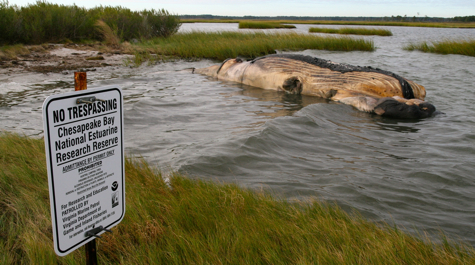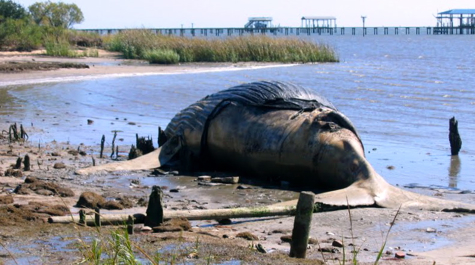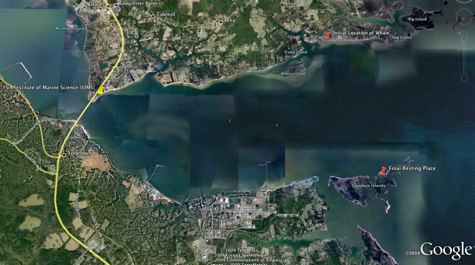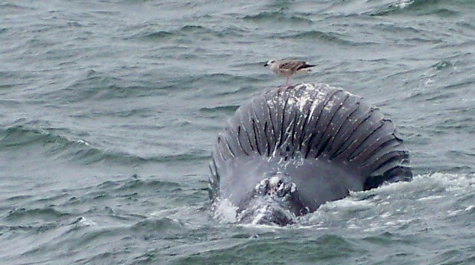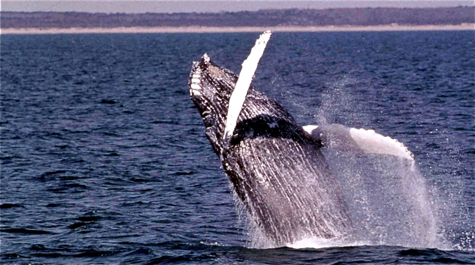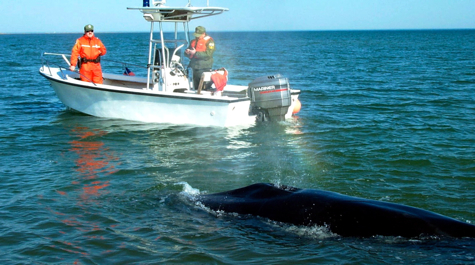Dead whale towed to isolated area
The dead humpback whale that washed ashore on the Gloucester County shoreline earlier this week has been towed to and anchored in a less-developed area on the other side of the York River near the Goodwin Islands.
The towing was done by a private company, Sea Tow Lower Chesapeake Bay, in collaboration with the Virginia Aquarium’s Stranding Response Program and researchers at the Virginia Institute of Marine Science. Sea Tow is located in the coastal community of Seaford.
The 25-foot whale, a juvenile female with an estimated weight of 10 tons, will be left to decompose. VIMS professor Rom Lipcius says the carcass has been “anchored in a remote location in shallow water where it can become part of the ecosystem and provide food for crabs, fish, and other scavengers.” Officials estimate the carcass should be fully decomposed by early spring.
Lipcius notes that all marine mammals, live and dead, are protected under the federal Marine Mammal Protection Act. It is illegal to approach or touch a dead whale, and could be dangerous due to the possibility of contracting a disease.
The Goodwin Islands is a component of the Chesapeake Bay National Estuarine Research Reserve system operated by the Virginia Institute of Marine Science and the National Oceanic and Atmospheric Administration (NOAA).
The cause of the whale’s death remains unknown. The carcass was originally sighted near the middle of Chesapeake Bay at 37°16’ N, 76° 10.7’ W at around noon on September 26th. The degree of decomposition suggested the whale had died fairly recently, within a few days of sighting. The whale then washed into shallow waters near the mouth of the Perrin River, a small tributary of Chesapeake Bay near Gloucester Point.
Handling and disposal of dead marine mammals in Virginia waters is the responsibility of the Virginia Aquarium and Marine Science Center in Virginia Beach, with assistance from the Virginia Institute of Marine Science and the Virginia Department of Game and Inland Fisheries.
Researchers with the Aquarium’s Stranding Response team took tissue samples from the whale for further study.
Sea Tow is an international marine-assistance organization headquartered in Southold, N.Y., with franchises around nation, including in Seaford and Virginia Beach. The company was established in 1983.


